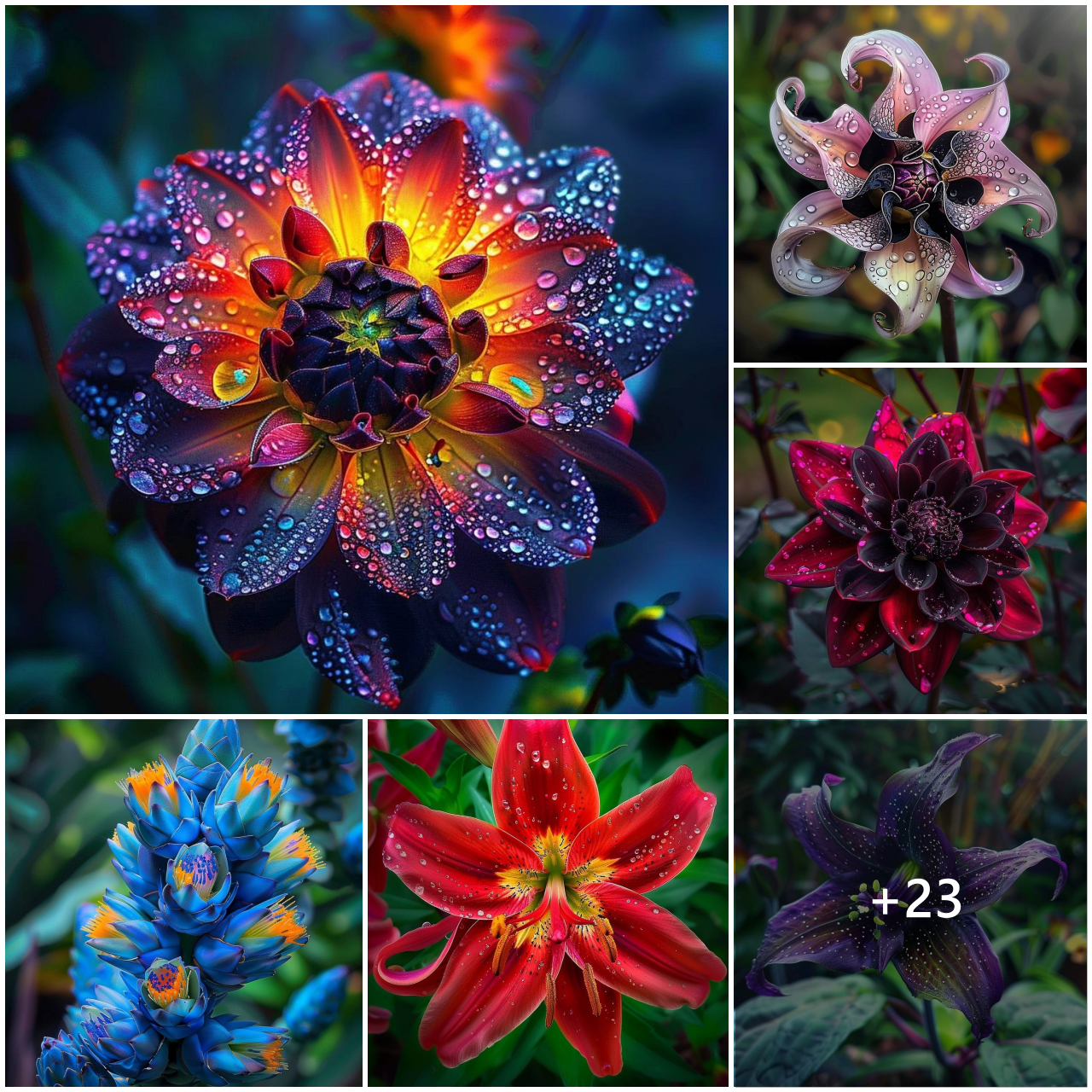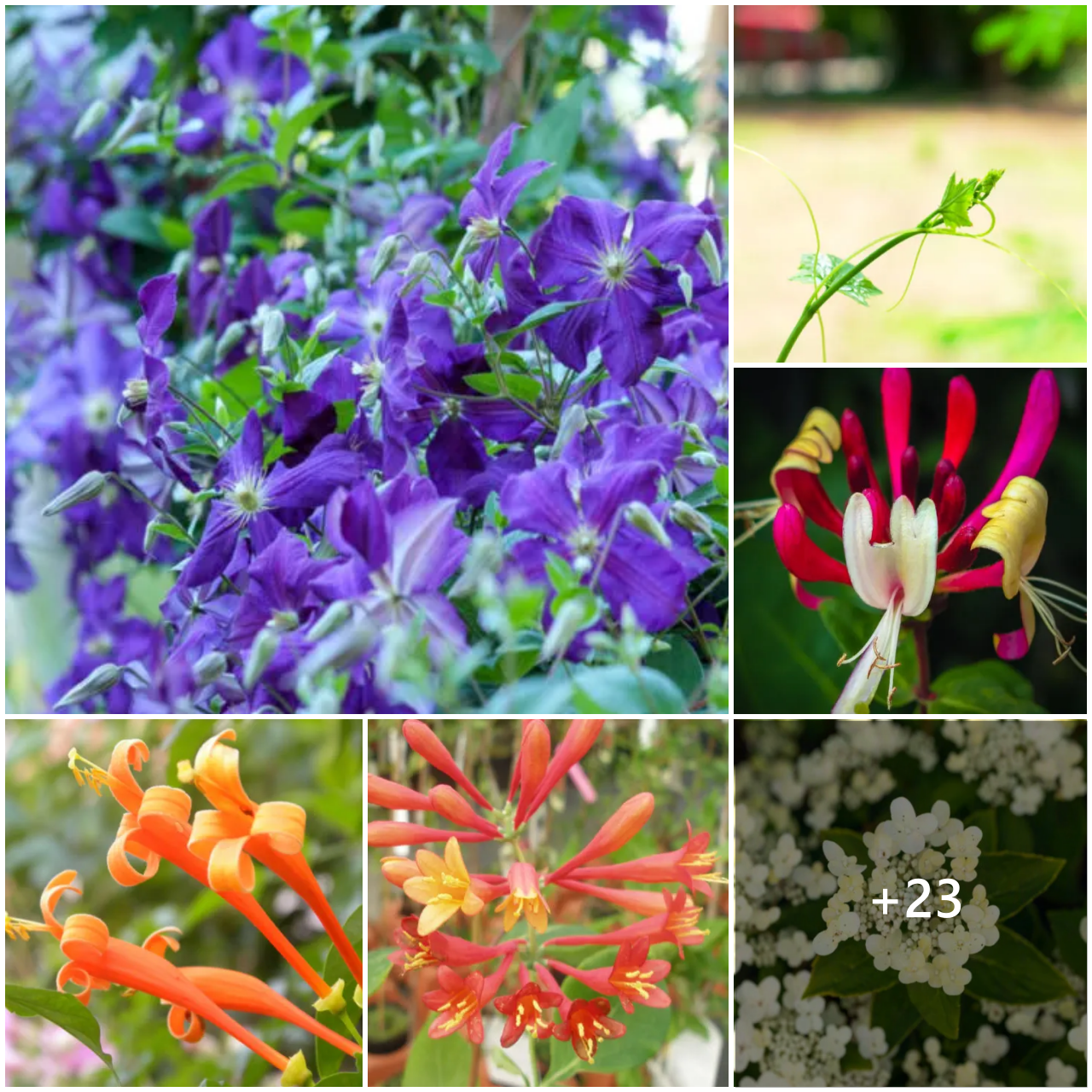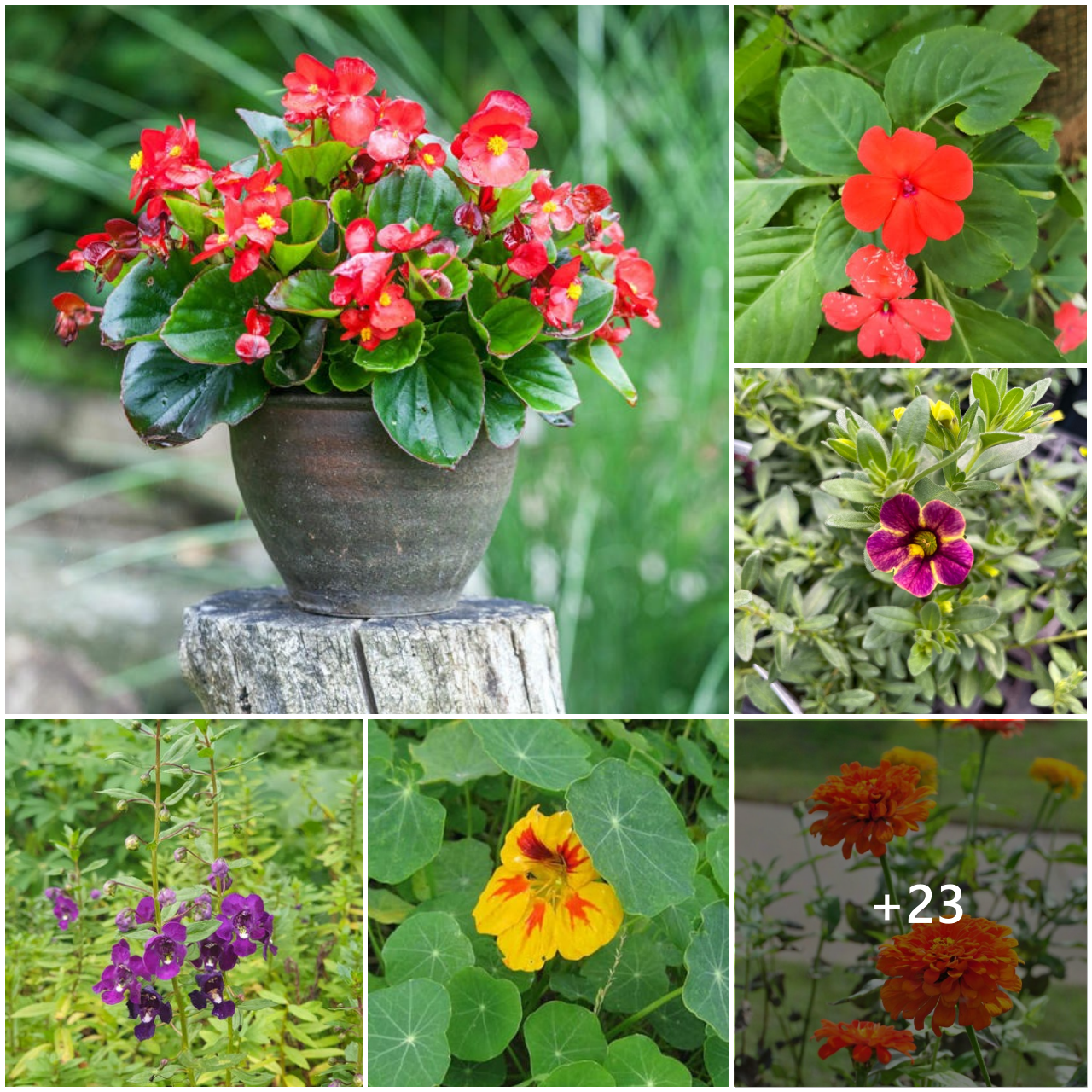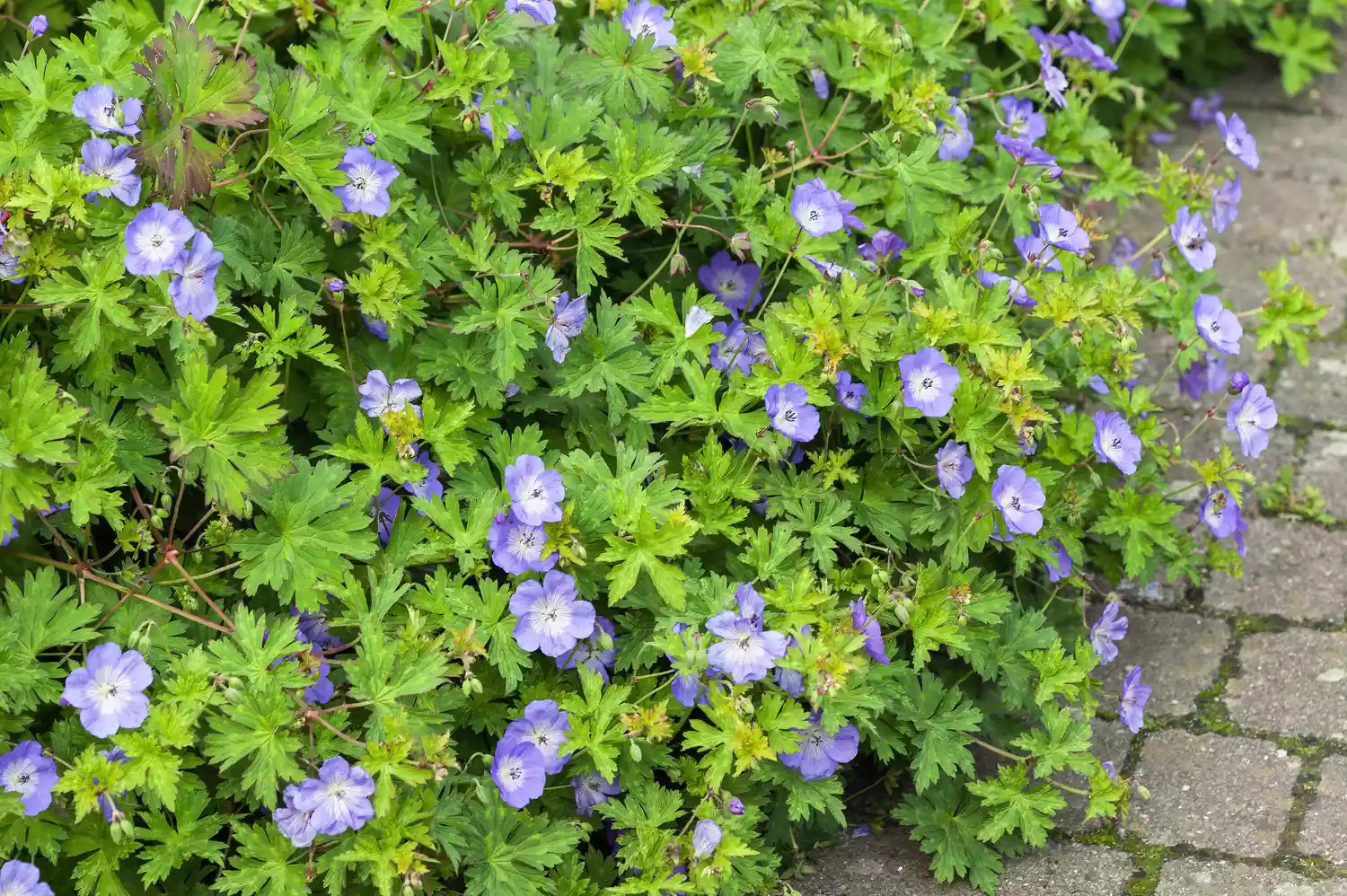
Border plants play an essential role in unifying gardens. They are used to delineate space and accentuate the lines of a landscape, including planting beds and pathways. Border plants bridge the gap between the floor plane of a garden and its plantings, creating a more finished look. The best border flowers for your garden include annuals and perennials that complement their surroundings while guiding the eye through the landscape.
Your garden aesthetic will guide you in selecting border flowers that emphasize the existing style and structure of your garden. They can be used to soften hard edges and smooth transitions in more naturalistic plantings, or to reinforce the geometry of formal designs. Border flowers vary considerably in height or mass and are best scaled to match the surrounding plants and hardscape.
Give your gardens that finished look by edging pathways and bed lines. When selecting border flowers for planting beds, consider how plant material can create smooth transitions between the beds and their surroundings. Along walkways, flowering plants heighten the experience of moving through the landscape.
Coconut Surprise Dianthus
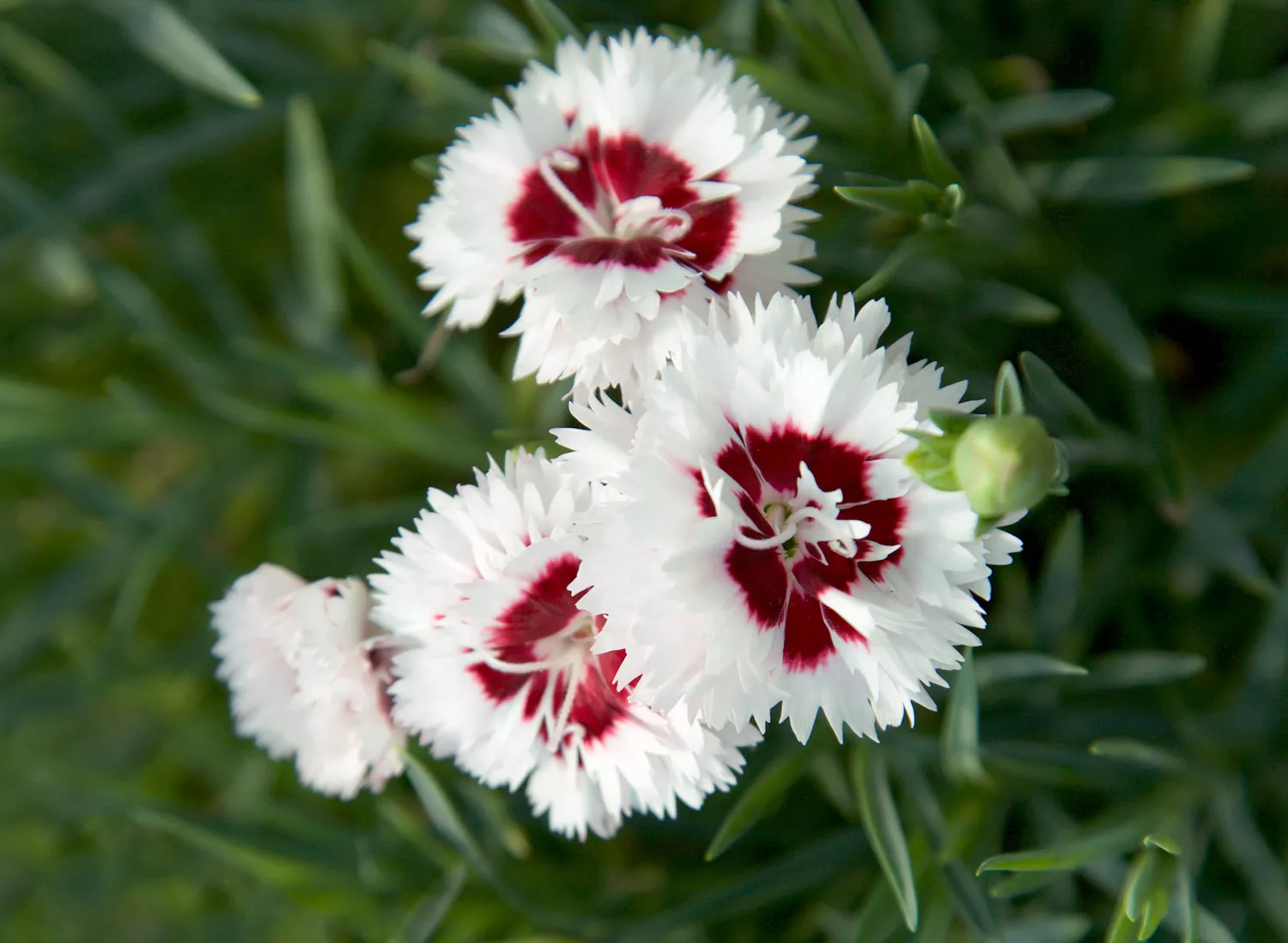
- Botanical Name: Dianthus hybrid ‘WP05 Yves’
- Sun Exposure: Full Sun to Part Shade
- Soil Type: Medium, Well-draining, Rich
- Soil pH: Slightly Acidic to Slightly Alkaline (6.0-8.0)
Sturdy evergreen foliage makes dianthus an ideal edging plant. The blue-green, grass-like leaves stand 8 to 10 inches tall year-round, but the blooms are the real draw. Clove-scented blossoms with frilly white petals and a dark red eye attract butterflies to the garden. Plants begin blooming in late spring and flower through summer with regular deadheading. Even plants that are not deadheaded will put on a repeat performance in autumn.
Speedwell
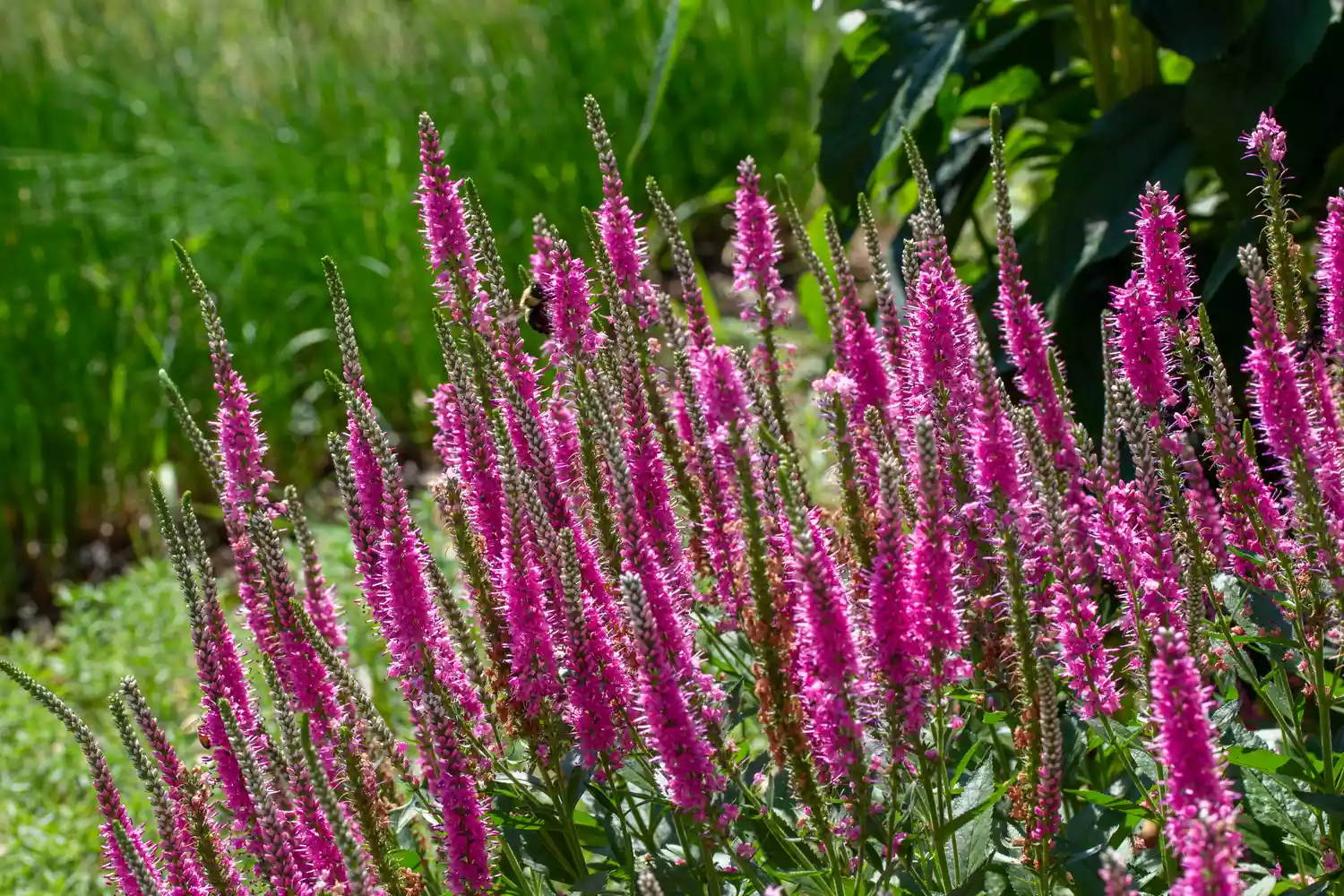
- Botanical Name: Veronica spicata
- Sun Exposure: Full Sun
- Soil Type: Medium to Moist, Well-draining
- Soil pH: Acidic to Neutral (5.8-7.5)
Spikes of speedwell look lovely poking up along the edges of paths and garden beds in summer. Flowering in shades of purple and blue, with some pink or white cultivars available, speedwell provides a vertical element to borders. The flowers attract a diversity of pollinators and are resistant to deer and rabbit browsing. Provide ample moisture and sharp drainage for this plant.
Catmint
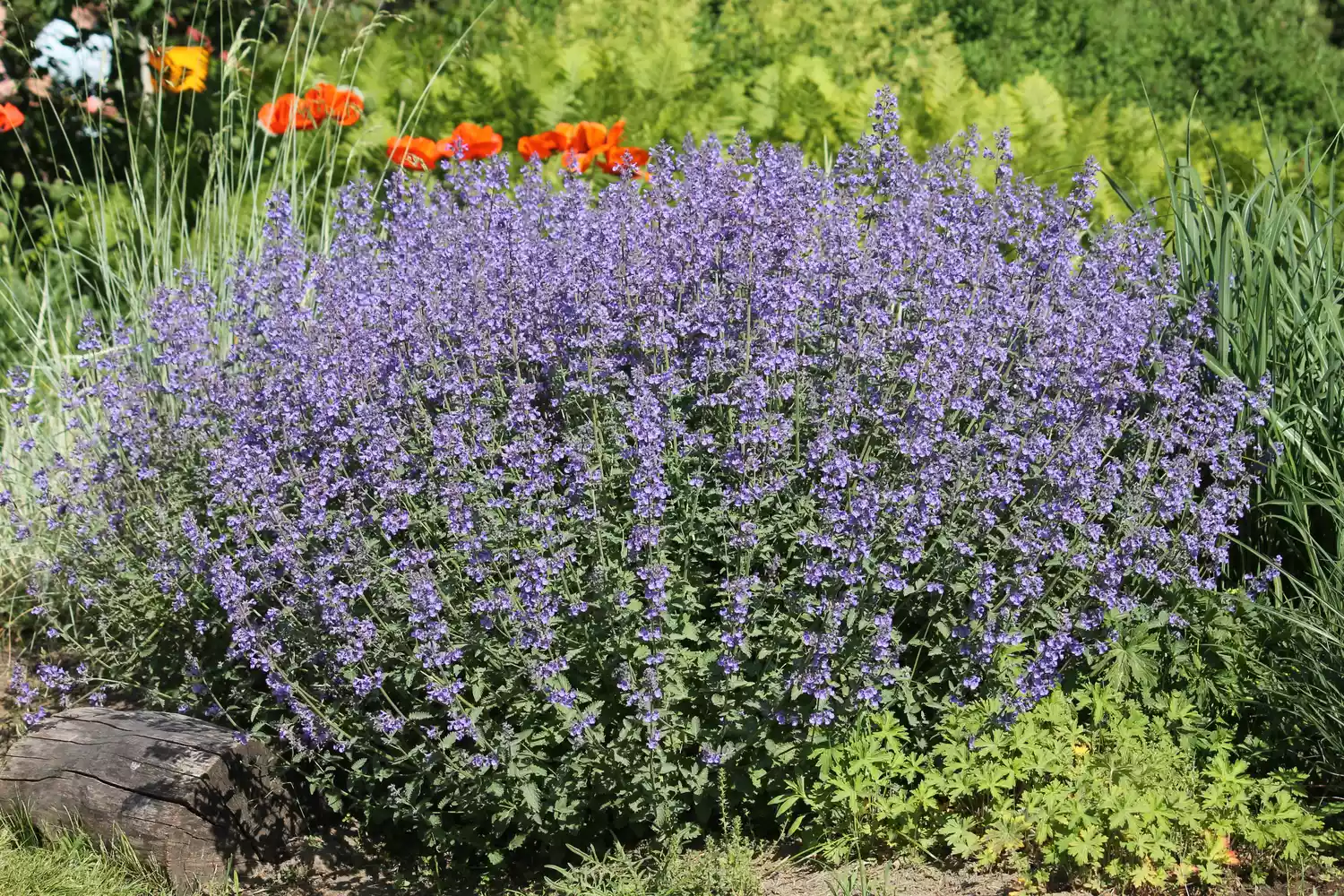
- Botanical Name: Nepeta species and hybrids
- Sun Exposure: Full Sun
- Soil Type: Dry to Medium, Well-draining, Average Fertility
- Soil pH: Slightly Acidic to Neutral (6.0 to 7.8)
With soft gray-green foliage and an abundance of blooms, catmint makes a striking border planting. Lower-growing varieties measure 12 to 18 inches tall but spread considerably wider to form a compact mound. Use them for lining sidewalks and driveways, or to add structure in more formal designs. Bees and butterflies cannot resist the purple blooms that cover plants from early summer through fall.
Moss Phlox
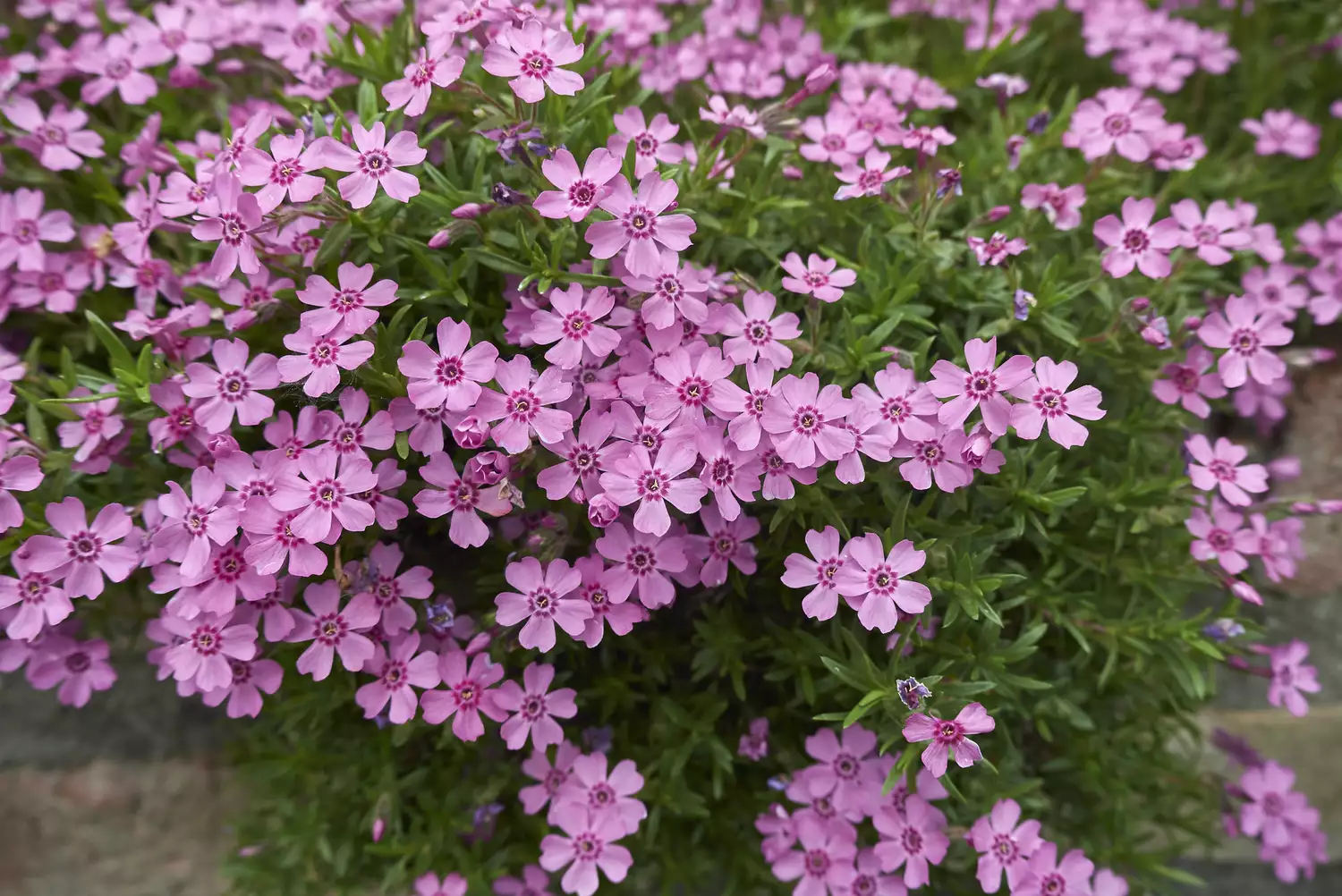
- Botanical Name: Phlox subulata
- Sun Exposure: Full Sun to Part Shade
- Soil Type: Medium, Well-draining
- Soil pH: Slightly Acidic to Neutral (5.5-7.5)
This ground-hugging perennial heralds the arrival of spring with a regal display of fragrant blooms. Flowers completely cover the needle-like foliage, carpeting the garden in vibrant pink, purple, and violet-red blooms. Moss phlox is perfect for edging woodland gardens and stone paths.
SunPatiens®
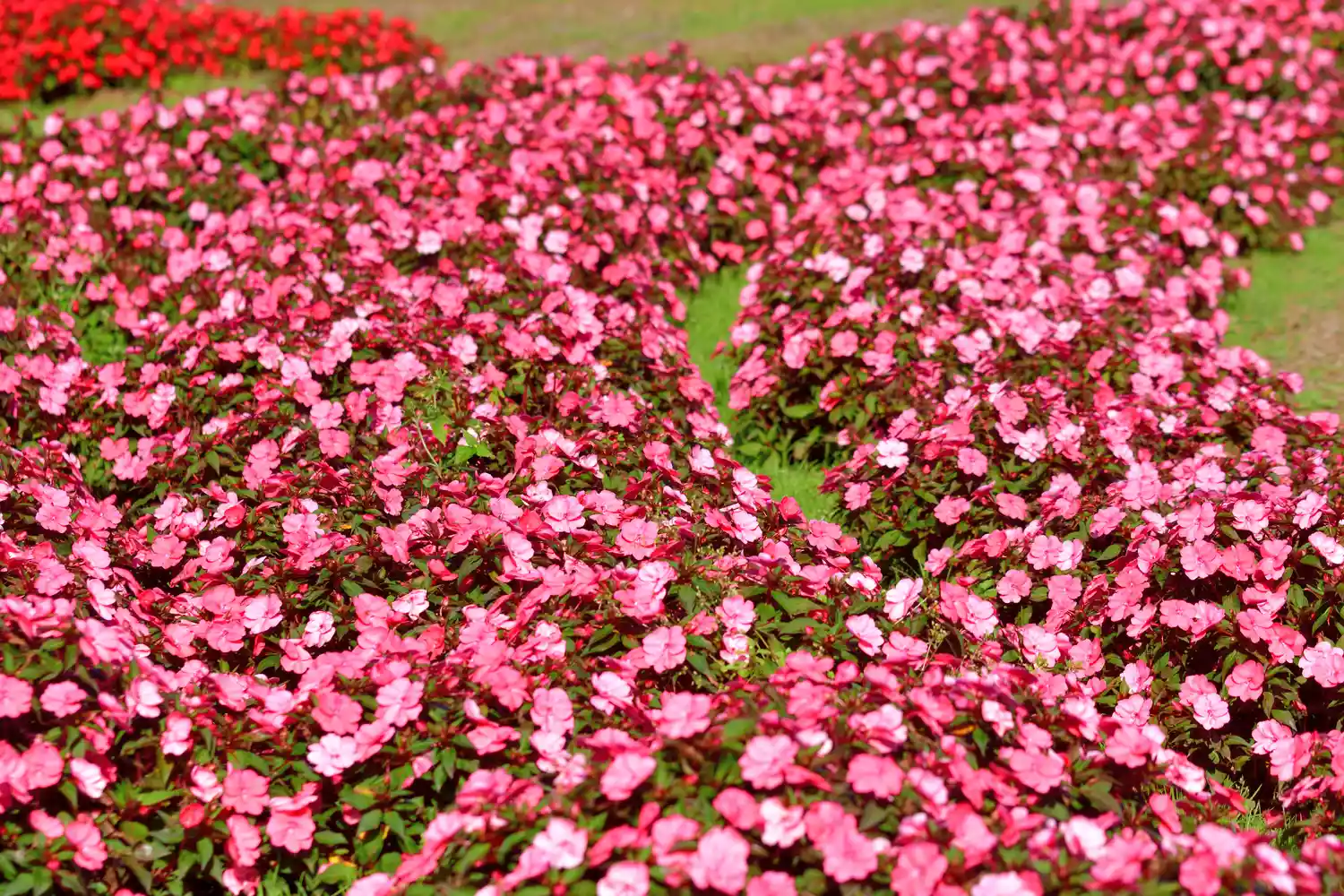
- Botanical Name: Impatiens hybrid
- Sun Exposure: Full Sun to Part Shade
- Soil Type: Moist, Well-draining
- Soil pH: Slightly Acidic to Neutral (5.8-7.0)
These are not your typical impatiens. SunPatiens® are a hybrid of New Guinea and wild impatiens that produce bushier plants, more blooms, and longer bloom times. SunPatiens® are also the first impatiens to tolerate full sun as well as high heat and humidity. Plant them in clumps around the patio or use them to line paths and walkways. The foliage is not susceptible to downy mildew, a common problem among impatiens.
Wishbone Flower
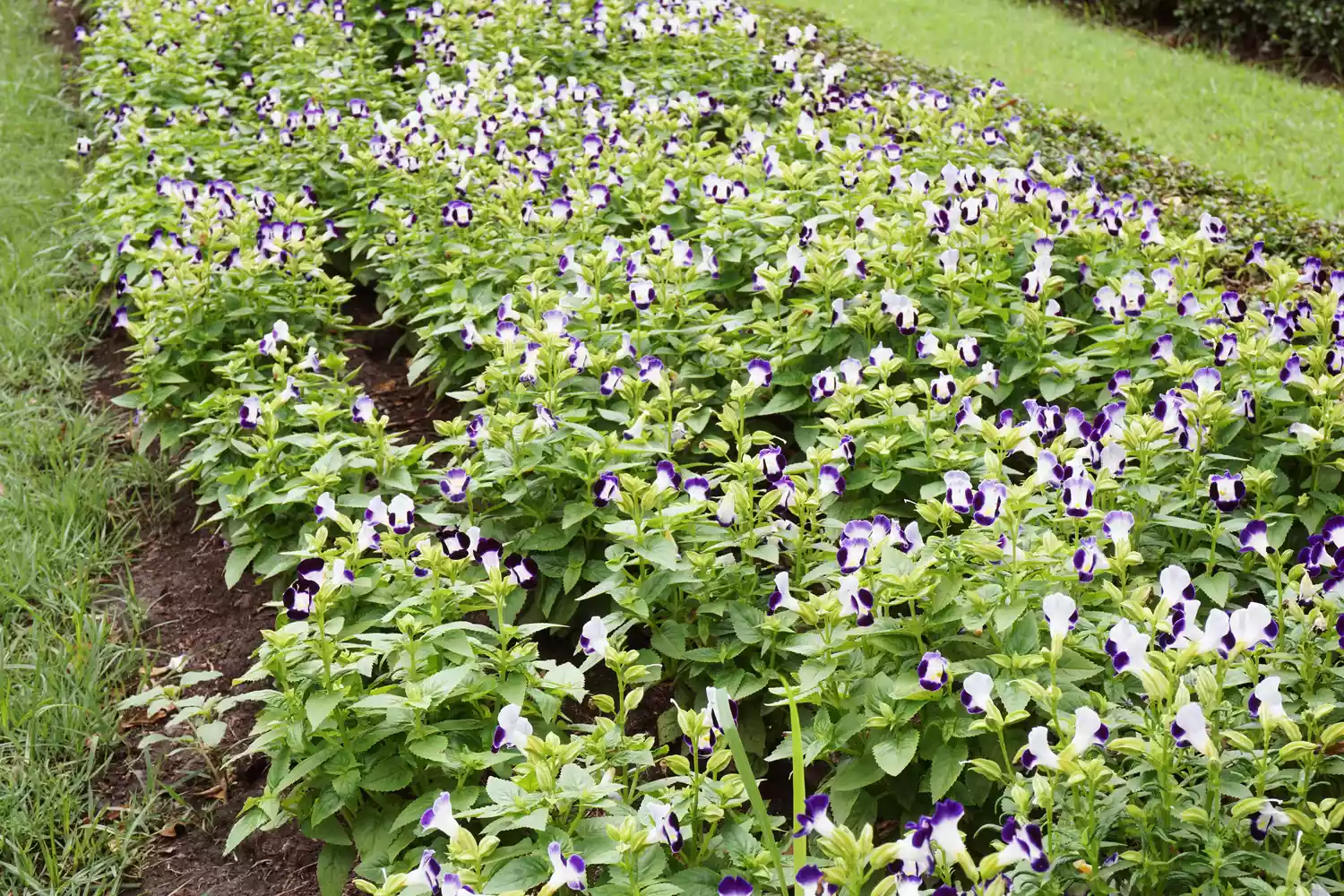
- Botanical Name: Torenia fournieri
- Sun Exposure: Part to Full Shade
- Soil Type: Moist, Well-draining, Rich
- Soil pH: Slightly Acidic to Slightly Alkaline (6.0-8.0)
This easy to grow annual brings vibrant color to shady borders with showy trumpet-shaped blooms opening summer through fall. The bi-color blooms pair dark and light shades of lavender, blue, pink, purple, and white. These pest free plants haven’t always thrived in the Deep South, but newer varieties in the Summer Wave® Series and Hi-Lite™ Mix tolerate heat and humidity.
Phenomenal® Lavender
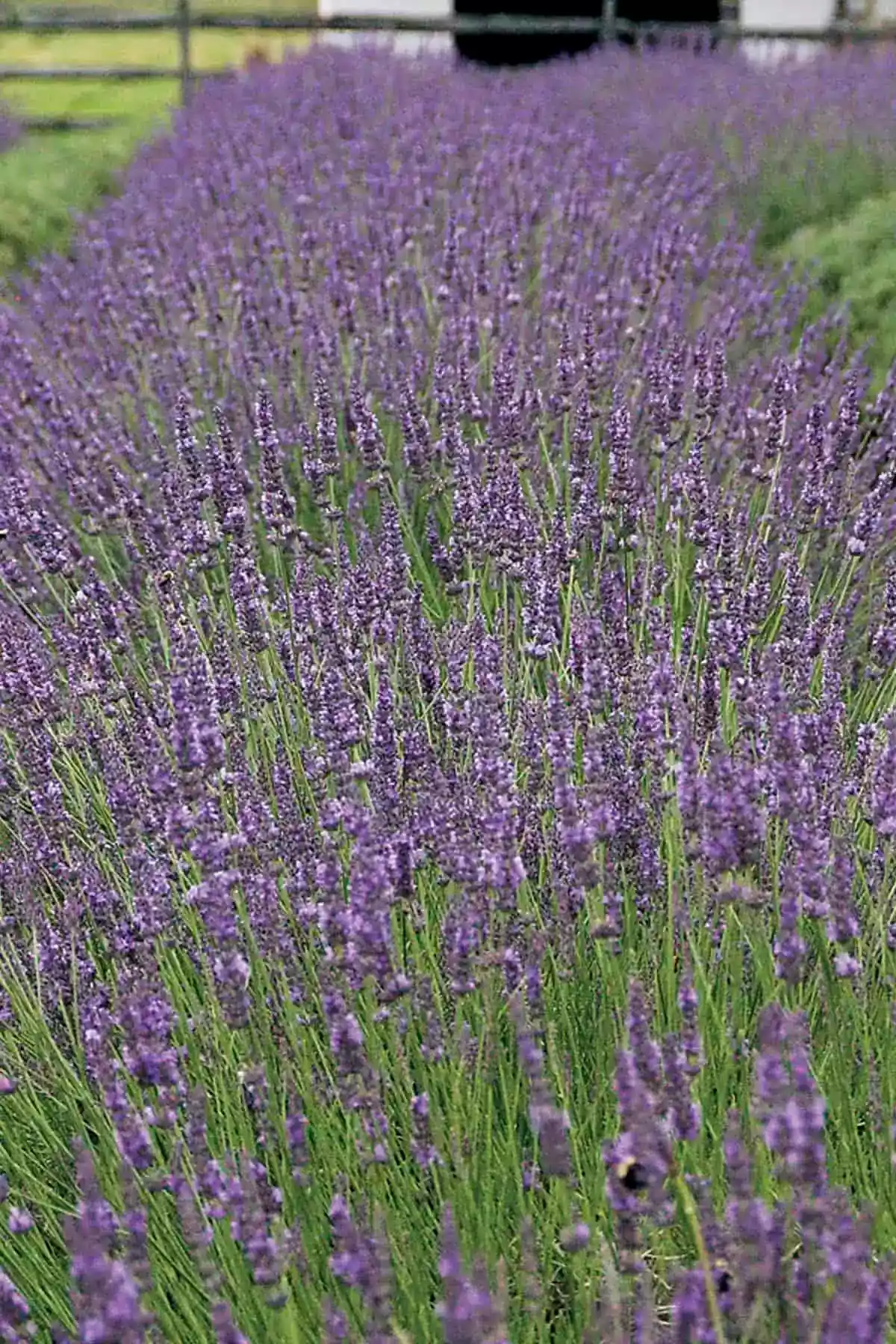
- Botanical Name: Lavandula × intermedia ‘Niko’
- Sun Exposure: Full Sun
- Soil Type: Dry to Medium, Well-draining
- Soil pH: Neutral to Slightly Alkaline (6.5-8.0)
There is something romantic about a walkway lined with lavender. The silvery foliage is meant to be brushed against, releasing its floral perfume. And the countless spikes of purple-blue flowers are alive with pollinators. The hybrid Phenomenal® tolerates heat and humidity, making it easier to grow in southern gardens. Plants must have excellent drainage. Use them to edge a raised bed or terrace wall.
Big® Series Begonia
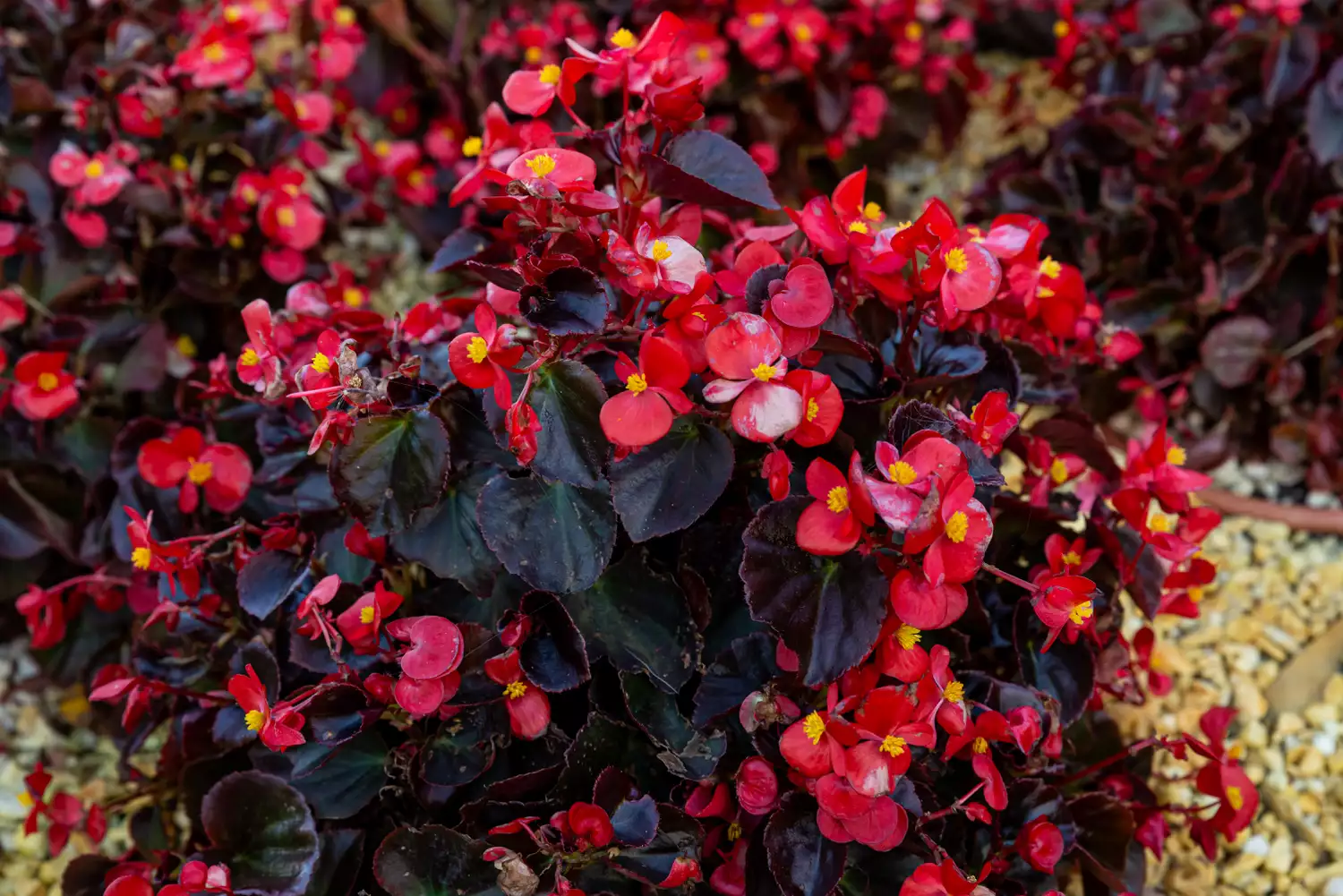
- Botanical Name: Begonia x benaratensis
- Sun Exposure: Full Sun to Part Shade
- Soil Type: Moist, Well-draining, Average to Rich
- Soil pH: Acidic (5.5-6.5)
Begonias are a staple among annual bedding plants. Plants in the Big® Series are hybrid wax begonias selected for their early bloom, large flowers, and vigorous habit. Big® begonias also tolerate hot and humid summers. Varieties with white, pink, red, or rose blooms are available, some with bronze-tinged foliage. These begonias perform best in sun-dappled shade and are perfect for edging shady walkways. Bronze-leafed varieties tolerate more sun.
Milly Rock™ Yarrow
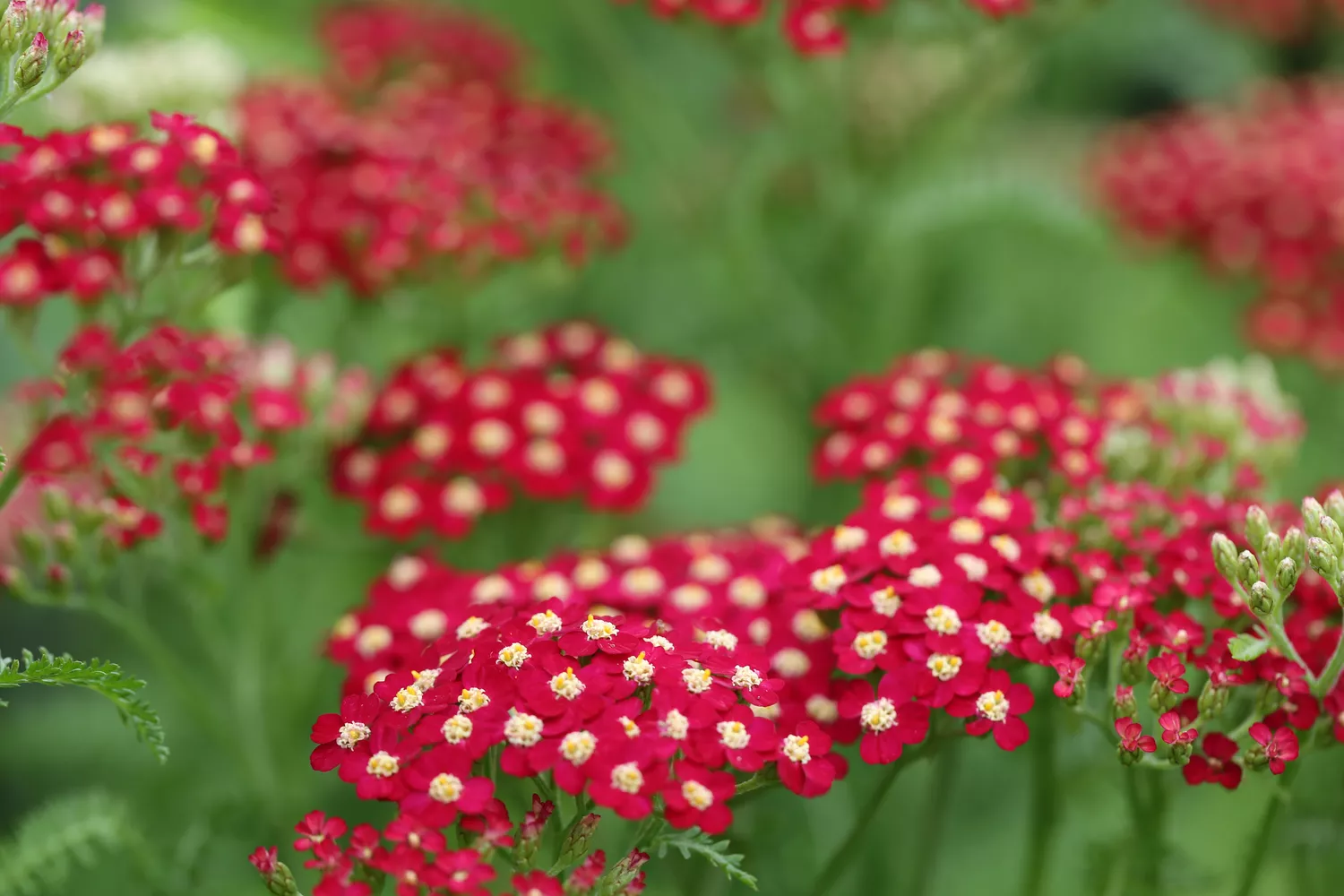
- Botanical Name: Achillea millefolium
- Sun Exposure: Full Sun
- Soil Type: Dry to Medium, Well-draining
- Soil pH: Slightly Acidic to Neutral (5.5-7.5)
Looking for a tough plant to edge that “challenging” area of the garden? This native cultivar of common yarrow fits the bill. Plants thrive in dry, lean soils and tolerate heat, humidity, and drought. And they look great while doing so. An abundance of blooms draws scores of butterflies, bees, and other beneficial insects to the garden. The red, yellow, pink, and orange varieties in the Milly Rock™ series are known for their compact, mounding habit and long blooming period stretching from late spring through fall.
Dwarf Morning-glory
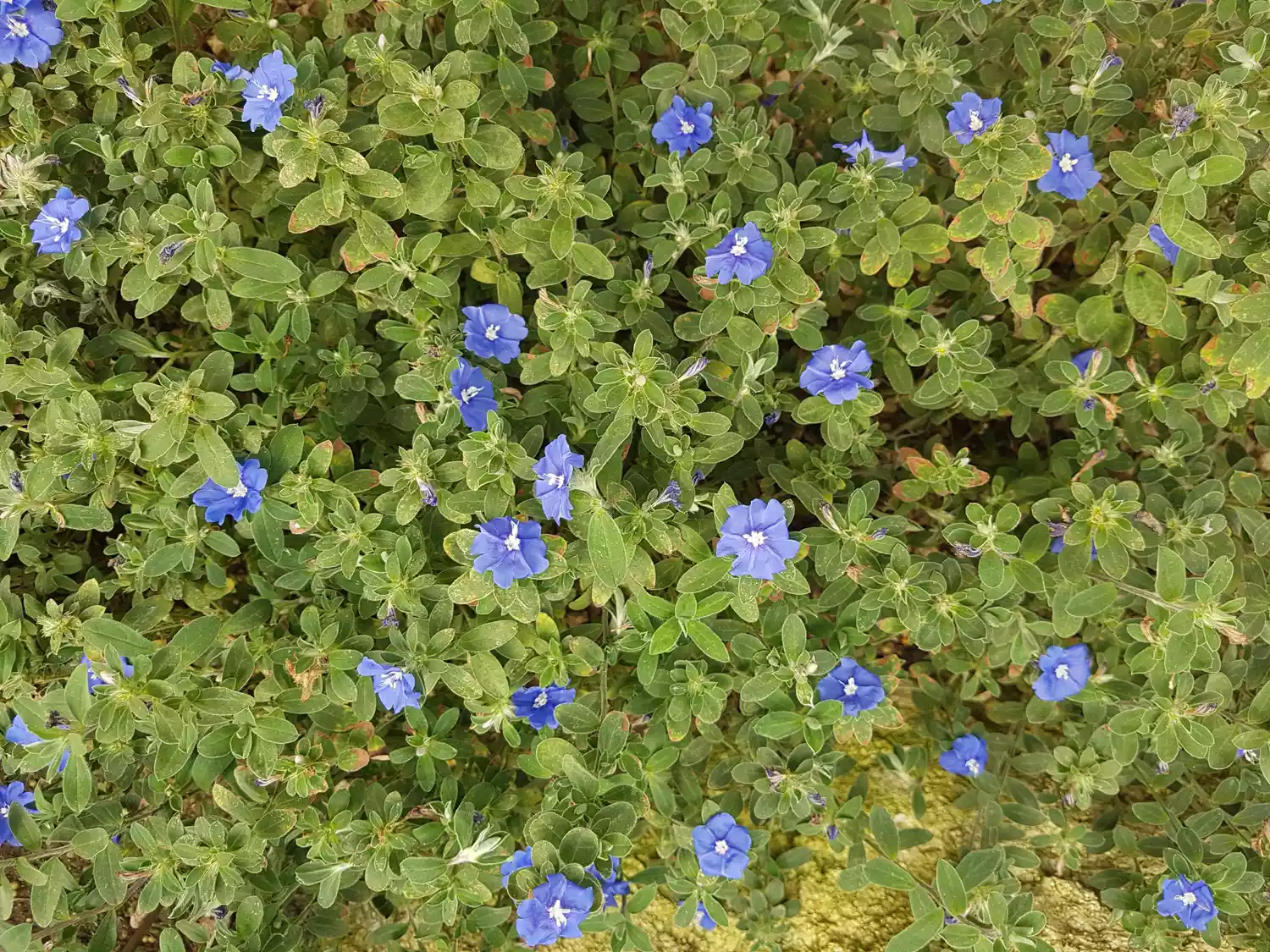
- Botanical Name: Evolvulus glomeratus
- Sun Exposure: Full sun
- Soil Type: Moist, Well-draining, Rich
- Soil pH: Slightly Acidic to Neutral (6.0 to 7.5)
With flowers blooming summer through fall in vivid true-blue hues, dwarf morning-glory invigorates sunny planting beds. Soft, silvery foliage grows in sprawling mounds that look fabulous scrambling over rock-lined edges. Heat-loving and virtually pest free, dwarf morning glory is a tender perennial typically grown as an annual.
Sea Thrift
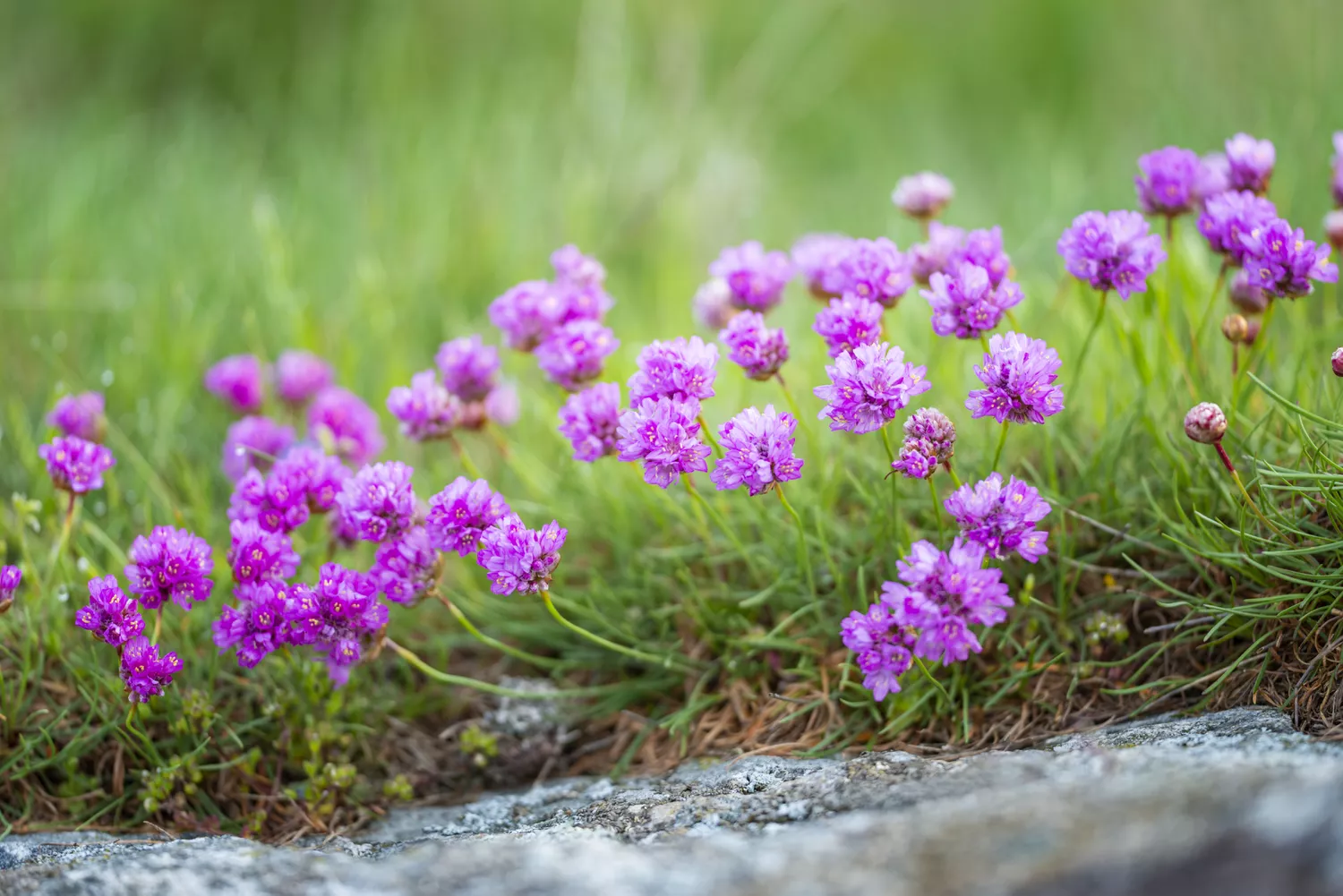
- Botanical Name: Armeria maritima
- Sun Exposure: Full Sun
- Soil Type: Dry, Well-draining, Infertile
- Soil pH: Acidic to Neutral (4.5-7.0)
Coastal gardeners will love this salt-tolerant evergreen perennial that produces a flush of bubblegum-pink flowers in spring followed by occasional summer blooms. Plants form a dense tuft of stiff grass-like foliage. Easy to grow and perfect for edging flagstone walkways, provide sea thrift with good drainage and loose soil.
Daylily
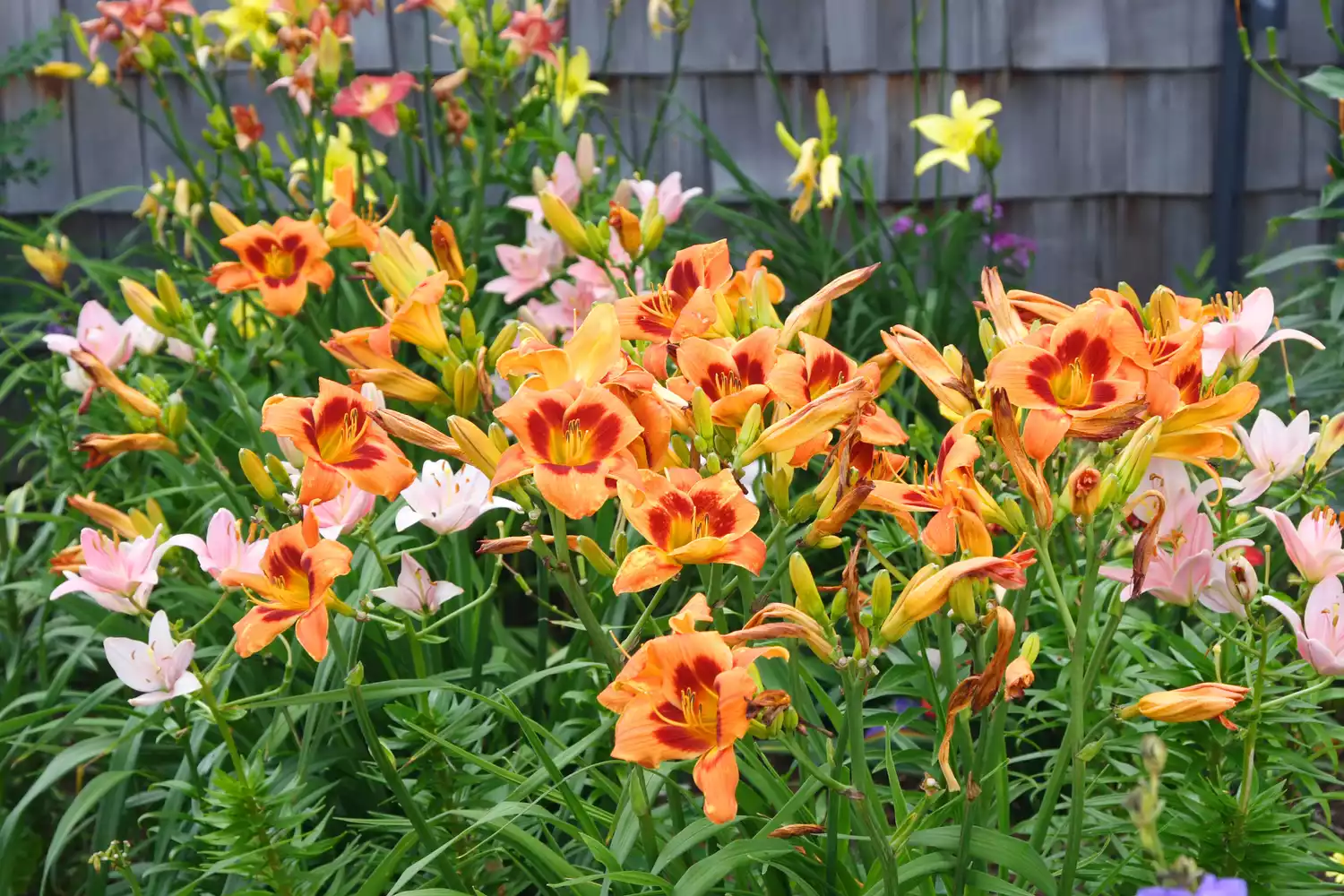
- Botanical Name: Hemerocallis hybrids
- Sun Exposure: Full Sun to Part Shade
- Soil Type: Medium, Well-draining, Average Fertility
- Soil pH: Slightly Acidic to Neutral (6.0-7.0)
With gracefully arching foliage, daylilies add texture and movement to garden borders and pathways. Plants are drought, heat, and salt tolerant, making them widely adaptable to gardens across the south. Many newer varieties provide season-long blooms when deadheaded. Everyone has a favorite variety–including the hummingbirds!
Ageratum
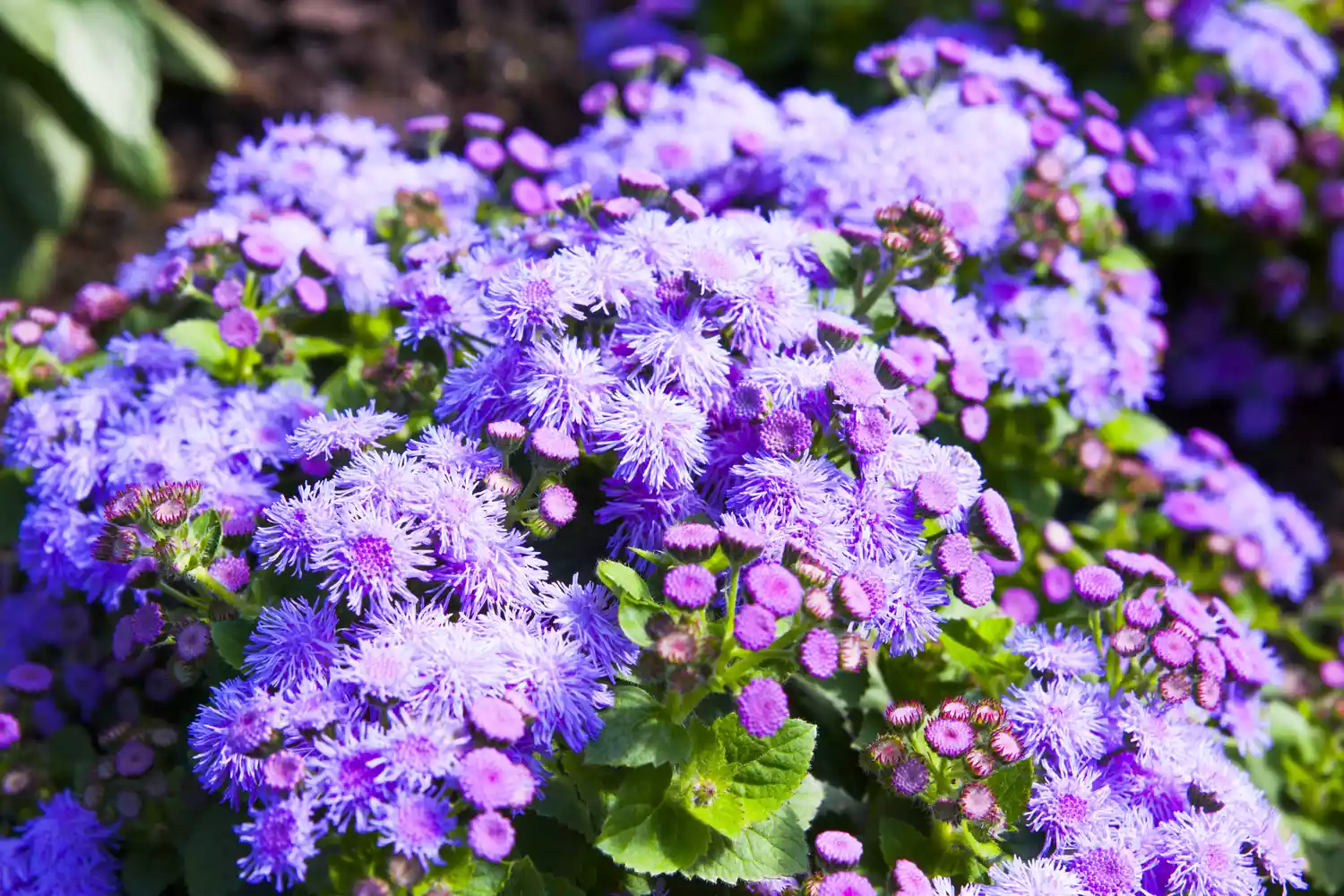
- Botanical Name: Ageratum houstonianum
- Sun Exposure: Full Sun to Part Shade
- Soil Type: Moist, Well-draining, Rich
- Soil pH: Slightly Acidic to Neutral (6.0-7.0)
This fast-growing annual blooms from spring to frost, attracting butterflies with clusters of fuzzy-looking flowers in shades of purple, blue, and pink. Shorter varieties are perfect for the front of borders and edging paths and patios. Plants perform best with light afternoon shade and even moisture.
‘Rozanne’ Geranium

- Botanical Name: Geranium ‘Gerwat’
- Sun Exposure: Full Sun to Part Shade
- Soil Type: Medium, Well-draining, Average Fertility
- Soil pH: Slightly Acidic to Slightly Alkaline (5.5-8.5)
With excellent heat tolerance and unsurpassed blooming, ‘Rozanne’ is unlike any other hardy geranium. Adored for its almost non-stop flowering, ‘Rozanne’ boasts showy violet-blue flowers, a unique color among hardy geraniums. Plants benefit from afternoon shade in warm climates, making them perfect for edging woodland paths.
Stonecrop
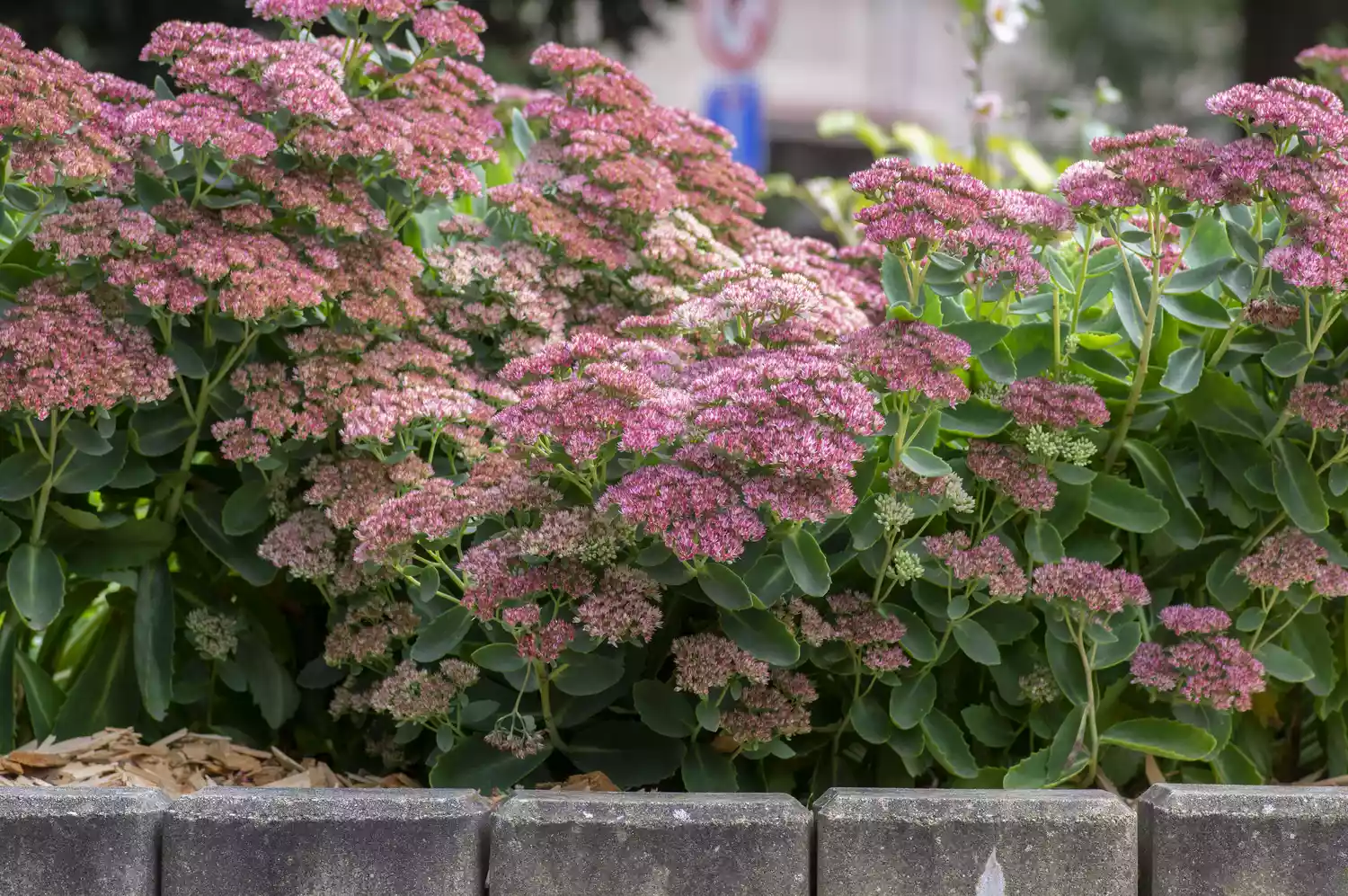
- Botanical Name: Hylotelephium (Sedum) species and hybrids
- Sun Exposure: Full Sun
- Soil Type: Dry to Medium, Well-draining, Average to Low Fertility
- Soil pH: Slightly Acidic to Slightly Alkaline (6.0-7.5)
Stonecrop is a dependable perennial that tolerates heat, drought, and poor soil. Species range from upright to sprawling, the latter of which are commonly used as groundcovers, though also make a fine edging plant. Upright varieties work well at the front edge of sunny beds. The pink, lavender, or burgundy blooms, depending on the variety, are a favorite of butterflies.


